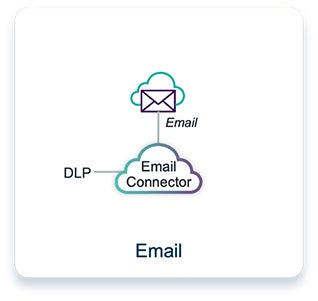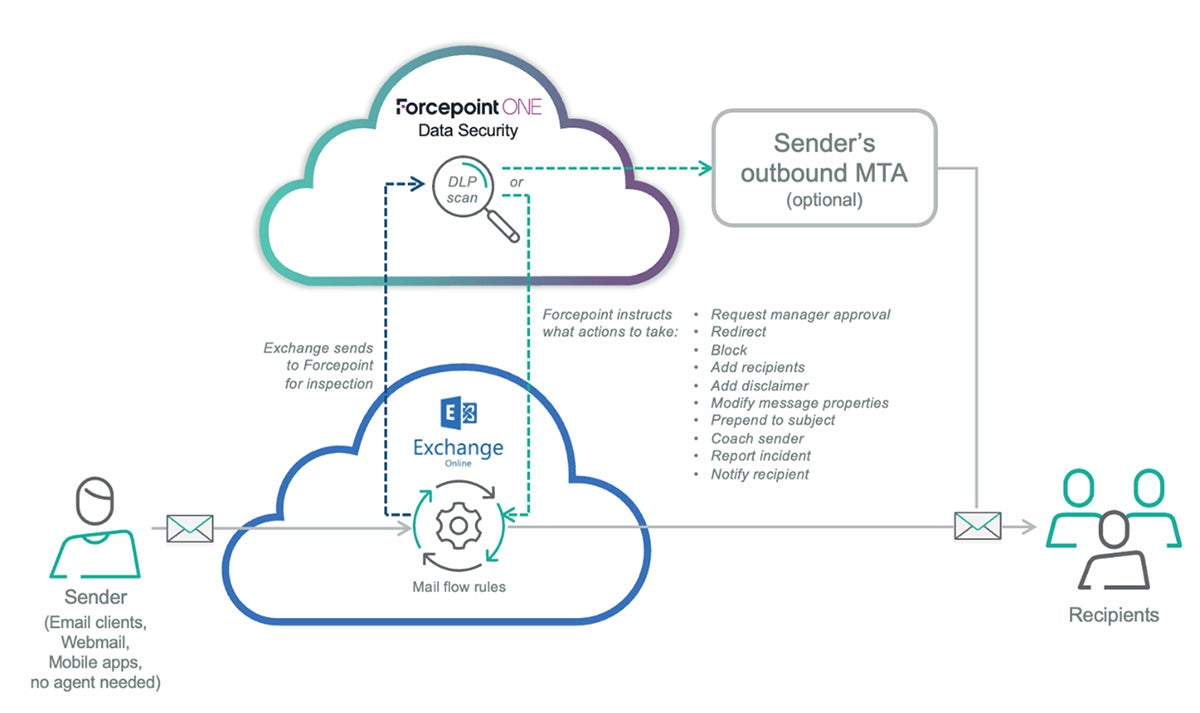Data Security Everywhere: Securing Data in Email
Part #3 in our Data Security Everywhere blog series
0 min read

Tuan Nguyen
"Change is the only constant," a timeless observation by the Greek philosopher Heraclitus, resonates particularly in today’s modern digital landscape. As the workforce navigates among fully remote, transitioning back to the office or embracing a hybrid mode, businesses are adapting to the challenge of safely having people working from anywhere with data that’s everywhere.
Closing the critical email security gap
Amid this dynamic environment, email remains the most prevalent channel for data breaches. According to Verizon’s 2023 Data Breach Investigations Report, over 50 percent of all breaches start from email. Whether due to inadvertent actions or malicious intent, email is where data loss often begins. Given that email is an indispensable tool for all businesses, unauthorized email content poses a substantial risk. This underscores the importance of effectively securing this communication channel with a consistent set of policies that can be enforced across all access channels.

Forcepoint has an industry-leading solution, DLP for Email, to ensure that sensitive information remains protected, compliant and under control. Let’s explore how this powerful tool can help organizations prevent unauthorized data exfiltration and ensure compliance through the email channel.
Simplifying email security – Your first line of defense
As businesses and government agencies redefine their operations, protecting email is seen as the first line of defense against data breaches. As Forrster said in their recent Forrester Wave™: Enterprise Email Security, Q2 2023 report:
Email is often, and justifiably, seen as the critical battle line that must be held.”
But how can organizations address the challenges of securing sensitive emails with the modern hybrid and remote workforce? That’s where features to simplify email security delivered by Forcepoint DLP for Email come in:
Extend industry-leading DLP capabilities
Forcepoint's industry best DLP seamlessly integrates with leading cloud email platforms. With over 1,700 built-in templates and data classifiers, organizations can tailor policies to their unique needs across 150 countries. Whether it's Microsoft Exchange, Gmail for Business or other email providers, Forcepoint DLP for Email ensures organizations can enforce consistent data security.
No agent required
Forcepoint DLP for Email works without requiring any agents, making it easy to deploy and manage. It seamlessly integrates with your email platform, providing enhanced capabilities like quarantine, encryption and manager approval all natively within the email workflow. Unlike endpoint-only solutions, inspection occurs at the network level extending these enhanced capabilities to BYOD devices – smartphones, laptops, Chromebooks and tablets – ensuring consistent security across all endpoints, managed or unmanaged.
Unified management
Forcepoint DLP for Email delivers unified management and enforcement of company data security policies across many different channels, including the different SSE gateways (cloud, web, endpoint). This holistic approach is designed to provide single-pane management of policies and incidents, streamlining security operations and enhancing visibility across the entire network.
Easy deployment with native workflow integration
Organizations can configure and publish policies within minutes. Native workflow features (Encryption, Quarantine, Manager Approval and more) enhance efficiency and provide users with a native Microsoft Exchange experience without the need for a separate console or different portal login.
Complements inbound threat protection
Forcepoint DLP for Email complements existing inbound threat protection solutions. By preventing unauthorized data exfiltration, it increases your organization’s security posture and defenses against both external and internal threats, creating a robust defense-in-depth strategy against evolving cyber threats.
Stay tuned for more on our strategic collaboration with Abnormal Security, where together we deliver advanced protection against today’s most sophisticated email attacks.
See how Forcepoint DLP for Email works in this short demo:
Forcepoint DLP for Email leverages our industry-leading Data Loss Prevention (DLP) technology to prevent data theft and loss across an organization’s largest threat vector for data breaches. Unified management of incidents and data security policies empowers organizations to protect their critical information and ensures that email communications remain secure, compliant and efficient.

With Forcepoint DLP for Email, you're taking a crucial step towards a safer digital environment where organizations can expect business outcomes such as:
- Increase Productivity – Enable people to work with sensitive data without the risk of losing control of it
- Cut Costs – Eliminate the need for additional consoles, duplicate policies and specialized agents
- Reduce Risk – Stop the #1 way that data is stolen
- Streamline Compliance – Provide consistent visibility and control over data leaving the organization
Don't miss out on the next chapter in our Data Security Everywhere series, which will explore the security benefits of Risk-Adaptive Protection.

Tuan Nguyen
Read more articles by Tuan NguyenTuan Nguyen serves as Product Marketing Manager at Forcepoint with a focus on web and cloud security solutions for SASE applications. With over 10 years of industry experience in cloud security, data center networking, and web development across both large enterprise companies and start-ups. He is passionate about bringing enterprise solutions to market and shaping a more secure digital landscape for organizations.
- Securing Data in Email
In the Article
 Securing Data in EmailLearn More
Securing Data in EmailLearn More
X-Labs
Get insight, analysis & news straight to your inbox

To the Point
Cybersecurity
A Podcast covering latest trends and topics in the world of cybersecurity
Listen Now